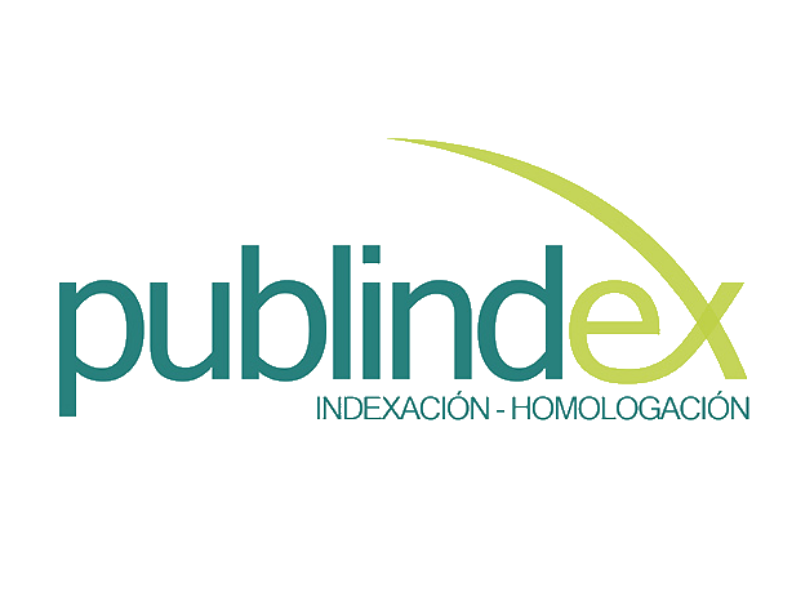Prevalence of presentation of some zoonotic agents transmitted by canines and felines in Medellin, Colombia
Prevalencia de presentación de algunos agentes zoonóticos transmitidos por caninos y felinos en Medellín, Colombia
Show authors biography
Objective. To determine in Medellin, Colombia, the prevalence of zoonotic agents in canines and felines. Materials and methods. 1501 individuals were sampled for the analysis of zoonotic gastrointestinal parasites by direct coprology and flotation. 500 canine sera were examined by PARP-2ME and MAT for the diagnosis of Brucella canis and Leptospira sp, respectively. 500 feline sera were processed by IFI for the diagnosis of Toxoplasma gondii. The frequency for each zoonosis and the statistical significance for the different variables were established (p≤0.05; OR≥1; 95% CI). Results. 23.6% of canines and 16.3% of felines were positive for gastrointestinal parasites; respectively Ancylostomids and D. caninum were the most prevalent; species, age, sex, sector, socioeconomic status and the month of sampling showed associations with gastrointestinal parasitism in pets. Canines showed a seroprevalence of 6.6% in B. canis and 8.4%, Leptospira sp; in felines 56.2% for T. gondii. All of the above associated with the commune, month of sampling, age and stratum. Conclusions. Pets located in different communes and socioeconomic strata with lower quality of life conditions represent a risk of zoonotic transmission.
Article visits 2907 | PDF visits
Downloads
- Sierra V, Jiménez JD, Alzate AA, Cardona JA, Ríos LA. Prevalencia de parásitos intestinales en perros de dos centros de bienestar animal de Medellín y el oriente antioque-o (Colombia), 2014. Rev Med Vet. 2015; (30):55-66. https://doi.org/10.19052/mv.3609
- Echeverry DM, Giraldo MI, Casta-o JC. Prevalence of intestinal helminths in cats in Quindío, Colombia. Biomédica. 2012; 32(3):430-436. https://doi.org/10.7705/biomedica.v32i3.439
- PMid:23715191
- González AC, Giraldo JC. Prevalencia de parásitos intestinales zoonóticos en caninos (Canis Lupus Familiaris) del área urbana del municipio de Coyaima (Tolima). Revista Med. 2015;23(2):24-34. https://doi.org/10.18359/rmed.1743
- Alcaldía de Medellín. Resultados Encuesta de Calidad de Vida 2015 [Internet]. Medellín: Alcaldía de Medellín; 2016 [cited 2016 Jul 30]. Available from: https://www.medellin.gov.co/irj/portal/medellin.
- Rodríguez VE, Espinosa O, Carranza JC, Arévalo A, Vallejo GA. Detección de parásitos intestinales en niňos preescolares y animales domésticos del municipio de Ibagué (Tolima). RCCA. 2015; 7(1):8.
- Manini MP, Marchioro AA, Colli CM, Nishi L, Falavigna AL. Association between contamination of public squares and seropositivity for Toxocara spp. in children. Vet Parasitol. 2012; 188(1):48-52. https://doi.org/10.1016/j.vetpar.2012.03.011 PMid:22480882
- Sánchez MM, Ortiz LF, Castrillón LL, Giraldo CA, Olivera M. Application of a polymerase chain reaction test for the detection of Brucella canis from clinical samples of canines and humans. Rev Colomb Ciencias Pecu. 2014; 27(1):3-11.
- Raghavan R, Brenner K, Higgins J, Hutchinson JS, Harkin K. Evaluations of hydrologic risk factors for canine leptospirosis: 94 cases (2002–2009). Prev Vet Med. 2012; 107(1):105-109. https://doi.org/10.1016/j.prevetmed.2012.05.004 PMid:22676955
- Palmezano JM, Plazas LK, Rojas D. Infección por toxoplasma: panorama actual. Spei Domus. 2015; 11(22):47-56. https://doi.org/10.16925/sp.v11i22.1154
- Castrillón L, Giraldo CA, Sánchez MM, Olivera M. Factors associated with Brucella canis seropositivity in kennels of two regions of Antioquia, Colombia. Cad Saude Publica. 2013; 29(10):1955-1973.
- Restrepo A. Guía en Parasitología Veterinaria. 1st ed. Colombia: Exitodinamica Editores; 1983. PMCid:PMC534400
- Haddadzadeh H, Khazraiinia P, Aslani M, Rezaeian M, Jamshidi S, Taheri M, et al. Seroprevalence of Toxoplasma gondii infection in stray and household cats in Tehran. Vet Parasitol. 2006; 138(3):211-216. https://doi.org/10.1016/j.vetpar.2006.02.010 PMid:16529863
- Palmero ML, Carballés V. Enfermedades Infecciosas Felinas. 1st ed. Espa-a: Editorial Servet; 2010.
- Alarcón Z, Juyo V, Larrotta J. Caracterización epidemiológica de parásitos gastrointestinales zoonóticos en caninos con due-o del área urbana del municipio de La mesa, Cundinamarca. Rev Med Vet Zoot. 2015; 62(1):20-36. https://doi.org/10.15446/rfmvz.v62n1.49382
- Solarte LD, Casta-eda R, Pulido AdP. Parásitos gastrointestinales en perros callejeros del centro de zoonosis de Bogotá DC, Colombia. Neotrop Helminthol. 2013; 7(1):83-93.
- Plascencia A, Proy H, Eljure N, Atoche C, Calderón C. Larva migrans cutánea relacionada con Ancylostomas. Dermatol Rev Mex. 2013; 57(6):454-460.
- Llanos M, Condori M, Ibá-ez T, Loza-Murguia M. Parasitósis entérica en caninos (Canis familiaris) en el área urbana de Coroico, Nor Yungas Departamento de La Paz, Bolivia. J Selva Andina Res Soc. 2010; 1(1):37-49.
- Olave AM, Mesa JA, Botero JH, Pati-o EB, García GM, Alzate JF. Production and evaluation of the recombinant antigen TES-30 of Toxocara canis for the immunodiagnosis of toxocariasis. Biomédica. 2016; 36(1):39-51. PMid:27622437
- Bre-a JP, Hernández R, Hernández A, Casta-eda R, Espinoza Y, Roldán W, et al. Toxocariosis humana en el Perú: aspectos epidemiológicos, clínicos y de laboratorio. Acta Méd Peruana. 2011; 28(4):228-236.
- Wolfe A, Wright I. Human toxocariasis and direct contact with dogs. Vet Rec. 2003; 152(14):419-421. https://doi.org/10.1136/vr.152.14.419 PMid:12708589
- Dechner A. A retrospective analysis of the leptospirosis research in Colombia. J Infect Dev Ctries. 2014; 8(03):258-264. https://doi.org/10.3855/jidc.3123 PMid:24619254
- Escandón K, Osorio L, Astudillo M. Seroprevalence and factors associated with Leptospira infection in an urban district of Cali, Colombia. Cad Saude Publica. 2017; 33(5):e00039216. https://doi.org/10.1590/0102-311x00039216
- Sarkar U, Nascimento SF, Barbosa R, Martins R, Nuevo H, Kalafanos I, et al. Population-based case-control investigation of risk factors for leptospirosis during an urban epidemic. Am J Trop Med Hyg. 2002; 66(5):605-610. https://doi.org/10.4269/ajtmh.2002.66.605 PMid:12201599
- Faine S, Adler B, Bolin C, Perolat P. Leptospira and leptospirosis 1999-2000. 2nd ed. Melbourne: MediSci; 2000.
- Medrano C, Díaz CA, Dalmau EA. Diagnóstico de leptospirosis canina por medio de las técnicas Dot-ELISA y MAT en perros con enfermedad renal en Bogotá. Rev Med Vet. 2011; 21:133-145. https://doi.org/10.19052/mv.568
- Ca-ón WA, López N, Gómez JE, Dubey JP. An overview of seventy years of research (1944–2014) on toxoplasmosis in Colombia, South America. Parasit Vectors. 2014; 7(1):427. https://doi.org/10.1186/1756-3305-7-427 PMid:25190525 PMCid:PMC4262115
- Yongzhen P, Xuehui J, Changguo L, Shujing G. Dynamics of a model of Toxoplasmosis disease in cat and human with varying size populations. Mathematics and Computers in Simulation. 2018; 144(C):52-59. https://doi.org/10.1016/j.matcom.2017.06.007
























